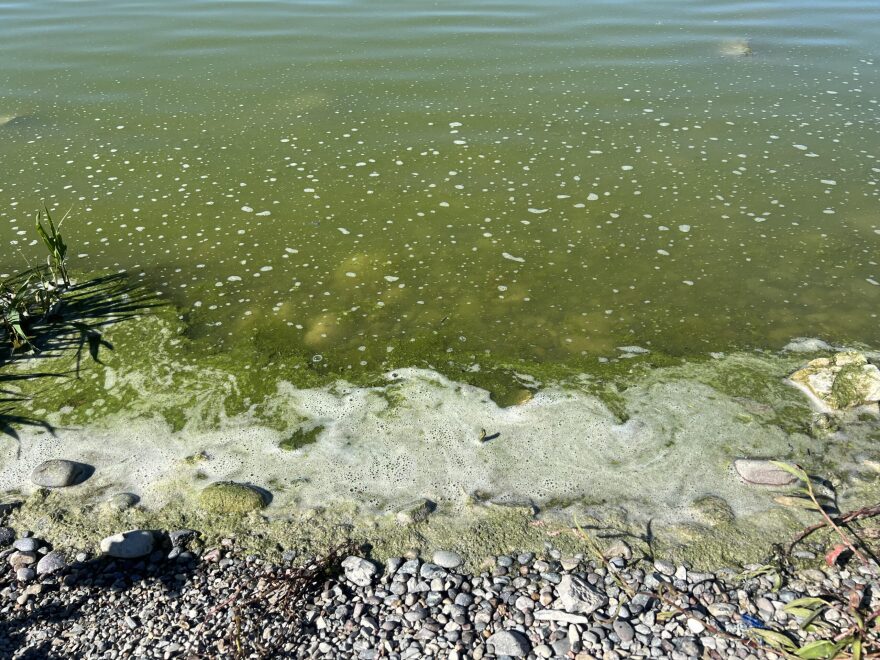This story is part of our Quick Hits series. This series will bring you breaking news and short updates from throughout the state.
Ten Wyoming lakes are under advisories for having potentially harmful cyanobacteria blooms (HCB).
The blooms are caused by imbalances of nutrients in the water and warm temperatures, and alerts tend to rise in the summer.
Blooms have been identified at:
- Boysen Reservoir
- Grayrocks Reservoir
- Little Soda Lake
- Lower North Crow Reservoir
- Luckey Pond
- Pathfinder Reservoir
- Viva Naughton Reservoir
- Wheatland Reservoir #1
- Wheatland Reservoir #3
- Woodruff Narrows Reservoir
Goshen Hole Reservoir is currently under investigation as testing results are pending.
The state issues a bloom advisory for a water body when a cyanobacteria bloom is present and cyanotoxins may be present. A toxin advisory is issued for a particular location within a waterbody when toxin concentrations exceed safe recreational levels.
As of mid-July, the state had not issued any toxin advisories.
Cyanobacteria, also called blue-green algae, can form blooms that produce cyanotoxins and other irritants that pose risks to human and animal health. The blooms may be green, tan, brown, or blue-green, and can float in or on the water. They often look like spilled paint, clumps, grass clippings, or scum. HCBs may also stick to underwater surfaces like rocks, plants, or debris, appearing as films, mats, or jelly-like balls.
If you, a pet or livestock touches the algae, rinse off with clean water as soon as possible. This water is not ok to drink, even if boiled or filtered. Seek medical attention if you or your furry friend gets sick after exposure.
The CDC lists symptoms of ingestion of cyanotoxins as headache, fever, bloody or dark urine, nausea, vomiting or diarrhea.
Young children, pregnant women, people with weakened immune systems and animals are at higher risk. More information on health risks and symptoms related to a cyanobacteria bloom can be found on the Wyoming Health Department’s webpage.
The Health Department and Wyoming Livestock Board recommend:
- Avoid contact with water in and around the bloom, especially in areas where cyanobacteria are dense.
- Do not swallow water from the bloom. Boiling, filtration, or other treatments will not remove toxins.
- Rinse fish with clean water and eat only the fillet portion.
- Avoid water spray from the bloom.
- Do not allow pets or livestock to drink water near the bloom, eat bloom material, or lick fur after contact.
- If people, pets, or livestock come into contact with a bloom, rinse off with clean water as soon as possible.
Other waterbodies in the state may also be affected. New or questionable blooms can be reported to WyoHCBs.org or WyoSpills.org.








